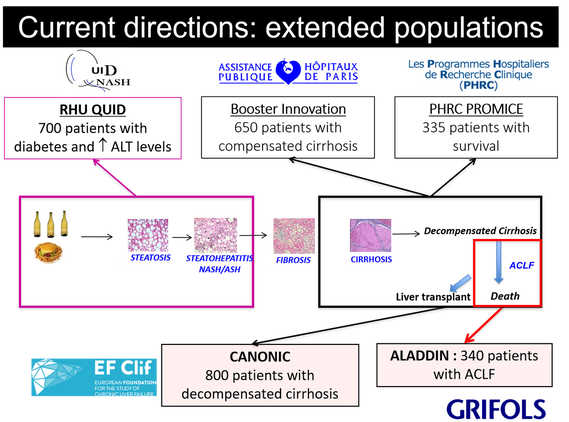RESEARCH PROJECTS
Our team is working on the role of vessels in liver disease. We are interested in rare vascular liver diseases (Budd-Chiari syndrome, extrahepatic vein thrombosis and porto-sinusoidal vascular diseases), nonalcoholic steatohepatitis and cirrhosis.
Current research directions :
- Liver sinusoidal endothelial cells in the progression of liver diseases
- Extracellular vesicles in liver diseases
- Porto-sinusoidal vascular disease
Liver sinusoidal endothelial cells in the progression of liver diseases
Recent advances indicate that intestinal and visceral adipose tissues play a key role in liver diseases. This suggests that substances are released by these tissues, influencing liver function. Liver endothelial cells are among the first cells to encounter blood from intestinal and visceral fat tissues. They are an active interface between blood and other hepatic cells. However, the role of liver endothelial cells in liver diseases is paradoxically very poorly understood.
We recently demonstrated that autophagy is defective in liver endothelial cells of patients with NASH and that this defect is induced by inflammatory mediators present in the portal blood of patients with metabolic syndrome
We also demonstrated that deficiency in autophagy induces liver endothelial cell alterations responsible for liver inflammation, liver cell death and liver fibrosis, thus promoting NASH development (Hammoutene A. J Hepatol. 2019).
We recently demonstrated that autophagy is defective in liver endothelial cells of patients with NASH and that this defect is induced by inflammatory mediators present in the portal blood of patients with metabolic syndrome
We also demonstrated that deficiency in autophagy induces liver endothelial cell alterations responsible for liver inflammation, liver cell death and liver fibrosis, thus promoting NASH development (Hammoutene A. J Hepatol. 2019).
Primary murine liver sinusoidal endothelial cells take up acLDL with high efficacy
Extracellular vesicles in liver diseases
Extracellular vesicles are membrane-bound vesicles released by cells into the extracellular space. They include apoptotic bodies, microvesicles, also previously known as microparticles, and exosomes. Extracellular vesicles are able to transmit information from one cell to another. We are currently determining the role of extracellular vesicles in progression and complications of liver diseases. To do so, we analyze their roles in intercellular communication between the liver and other organs, as well as among the liver itself.
We have recently demonstrated that microvesicles from red blood cells carry JAK2V671F mutation transfer a protein (myeloperoxidase) to endothelial cells thus increasing arterial response. This data can explain the increase of cardiovascular events in patients with JAK2V617F myeloproliferative neoplasms (Poisson J. J Clin Invest. 2020).
Electronic microscopy view from extracellular vesicles in liver vessels
Extracellular vesicles can also be used as biomarkers. We have already demonstrated that hepatocyte microvesicles can predict the course of patients with cirrhosis (Bissonnette J. Hepatology. 2017 & Payancé A. Hepatology 2018 & Thietart S. Journal of hepatology. 2020)
We are now validating these results in large cohorts of patients: Canonic Cohort; Booster Innovation; Promice; RHU QUiD; ALADDIN.
We are now validating these results in large cohorts of patients: Canonic Cohort; Booster Innovation; Promice; RHU QUiD; ALADDIN.
Porto-sinusoidal vascular disease
Previously called non-cirrhotic portal hypertension or nodular regenerative hyperplasia, is a rare disease characterized by alterations in the portal veins and/or sinusoids leading in some patients to portal hypertension and its complications. We are studying the pathophysiology of this disease as well as the future of patients with this disease. Pr. Pierre-Emmanuel Rautou is responsible of unity of Catheterisme hepatique in Beaujon Hospital.



